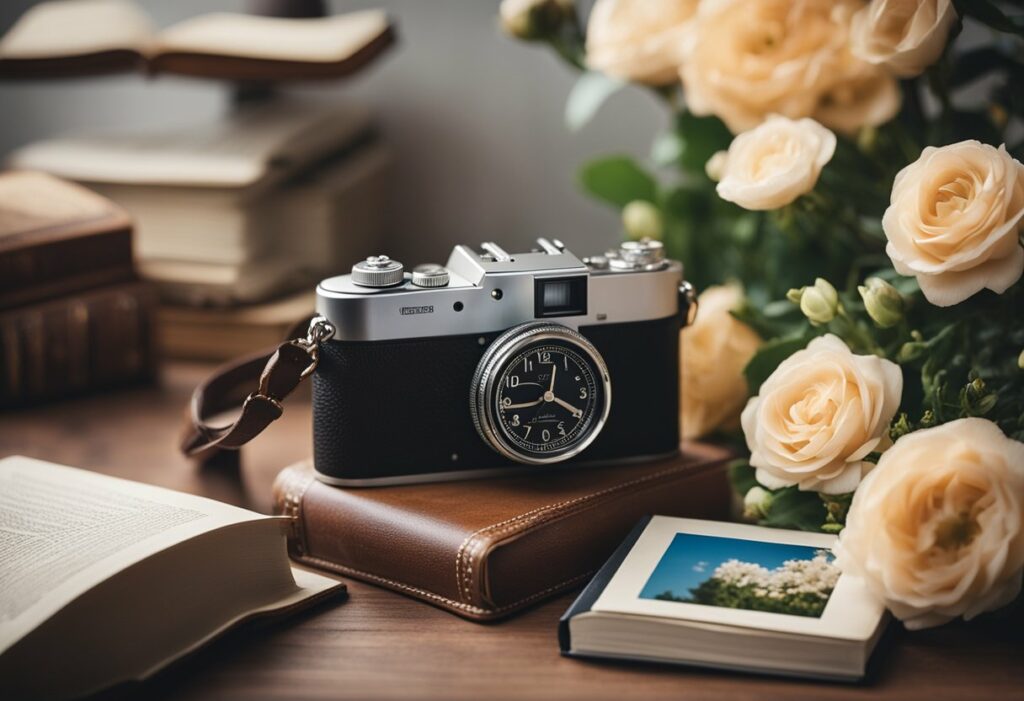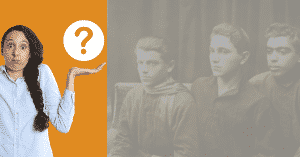As a photographer, I have discovered that working with seniors requires special considerations. It’s crucial to maximize natural light, showcase the subject’s interests, and thoughtfully incorporate accessories to create meaningful and captivating photos. Additionally, post-photography work, such as editing and displaying the images, is an essential step in the process. By exploring various avenues and frequently asked questions, photographers can further develop their skills and enhance their approach to creating timeless senior portraits.
Key Takeaways
- Developing photography skills helps capture meaningful moments for seniors
- Ensuring the subject’s comfort and showcasing their interests create captivating portraits
- Emphasis on natural light, thoughtful accessories, and post-photography work enhance the final outcome
Photography Tips for Seniors: Familiarizing with the Art of Photography
Understanding the Basics of Photography
As a senior, I find it essential to grasp the key elements of photography that make a huge difference in capturing beautiful memories. The three main pillars of photography are ISO, aperture, and shutter speed.
- ISO is the camera’s sensitivity to light. A low ISO (such as 100 or 200) is suitable for well-lit environments, while a higher ISO (like 800 or 1600) is necessary for darker situations.
- Aperture refers to the opening in the lens that controls the amount of light entering the camera. A larger aperture (lower f-number, such as f/2.8) allows more light in, creating a shallow depth of field. A smaller aperture (higher f-number, like f/16) lets in less light, resulting in a larger depth of field.
- Shutter speed determines how long the camera’s sensor is exposed to light. Faster shutter speeds (like 1/1000th of a second) freeze action, while slower speeds (such as 1/30th of a second) can capture motion blur or create long exposure effects.
Difference Between DSLR and Smartphone Cameras
In my experience, both DSLR and smartphone cameras have their specific advantages and disadvantages.
DSLR cameras are advanced and versatile, offering high-quality images and a wide range of lenses and accessories. They enable control over ISO, aperture, and shutter speed, allowing me to capture the perfect shot in various situations. However, DSLRs are bulkier and heavier, which can make them inconvenient to carry, especially for seniors like myself.
On the other hand, smartphone cameras are compact and always with me. They have come a long way and now capture impressive images. Smartphones often have automatic settings that simplify the photography process. Nonetheless, smartphone cameras generally have smaller sensors, resulting in lower image quality compared to DSLRs. Additionally, they offer limited control over settings like ISO, aperture, and shutter speed.
In conclusion, familiarizing myself with the basics of photography and understanding the differences between DSLR and smartphone cameras has allowed me to adapt my approach to various situations and capture timeless memories effectively.
Finding Your Photography Style
Exploring Different Styles
As a senior, capturing memories through photography is a wonderful way to preserve experiences and emotions. To start finding my photography style, I first need to explore different styles and techniques. This can involve researching various photographers to gain inspiration and learning about their unique approaches. By understanding the characteristics of different photography genres, such as portrait, landscape, or black and white, I can make informed choices about the styles that resonate most with me.
To make my exploration more engaging, I can participate in photography workshops or online courses that help me understand different techniques and processes. It’s also valuable to connect with fellow photographers who can share their personal experiences and guidance. As I try out different styles, experimenting with various perspectives, lighting conditions, and compositions will help me find preferences that reflect my personality.
Identifying Your Personal Style
Once I’ve explored various photography styles and techniques, my next step is to identify my personal style. This involves carefully reviewing my work and brainstorming the aspects that define me as a photographer. To do this, I would focus on my strengths, interests, and the recurring themes in my photos.
It’s important to consider the emotions my photographs evoke in viewers, as this can reveal a lot about my unique vision. How I capture people or objects, the colors I use, and my artistic touch all contribute to my photography style.
Next, I’ll collect my favorite photos and analyze them to identify the elements that most represent my personal style. This could include:
- Subject matter
- Lighting and composition
- Color palette
- Mood and atmosphere
- Editing preferences
- Use of patterns and textures
By identifying these elements, I’m able to create a cohesive personal style that reflects who I am as a photographer.
In conclusion, finding my photography style as a senior involves exploring different styles, experimenting with various techniques, and identifying the elements that embody my unique vision. By doing this, I’m able to create timeless photos that capture memories and emotions in a way that feels authentic to me.
Tips for Capturing Senior Photos
Choosing the Right Location
When I take senior photos, the location plays a significant role in conveying the personality and interests of the individual. I ensure that I pick a location that is meaningful to the senior and has a visually appealing backdrop. Ideal locations may include parks, urban settings, or even their own backyard. Discuss with the senior beforehand to choose a location that suits their preferences and style.
Posing and Composition Tips
I believe that the key to capturing a great senior photo is making the subject feel comfortable and at ease. I use creative posing techniques and focus on natural expressions, capturing candid smiles and genuine emotions. Here are some tips to achieve successful senior photo poses and compositions:
Include Props: Props enhance the photo by adding a personal touch and showcasing the senior’s hobbies or interests, such as a musical instrument or a piece of sporting equipment.
Encourage Movement: To add energy and liveliness, I incorporate movement in the poses, like walking, running, or jumping. This also helps the senior relax and feel more natural in front of the camera.
Play with Angles: To capture a unique perspective, I consider shooting from different angles, such as low angles or using reflections to add visual interest.
Remember, the goal is to capture authentic smiles and body language that showcase the senior’s personality. As a photographer, I take the time to connect with my subject and ensure they’re relaxed and having fun during the session. This approach helps me capture genuinely timeless photos that seniors and their families can cherish for years.
Creating a Comfortable Environment
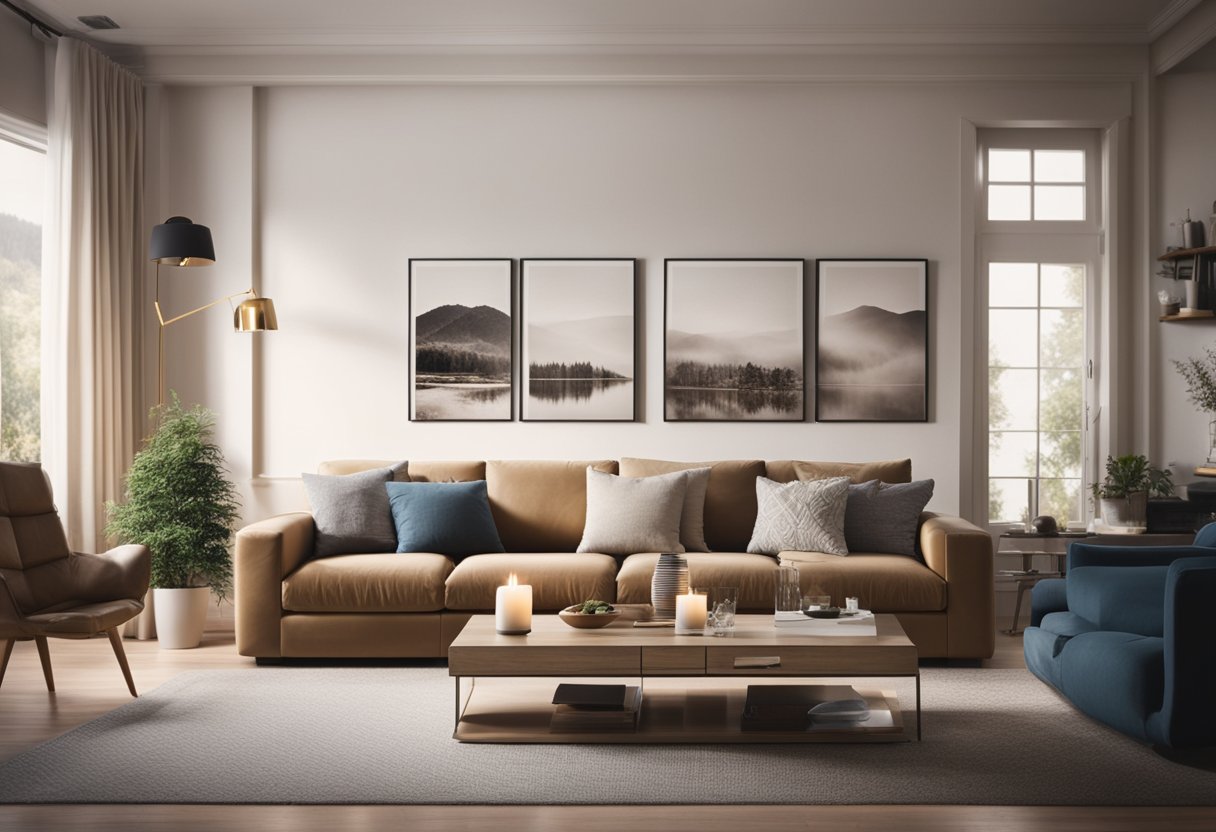
Making Your Subject Comfortable
When capturing timeless photos as a senior, it’s essential to create a comfortable environment for your subject. I like to ensure that the lighting is soft and welcoming, and the space is free from distractions. I often play soft background music to set a relaxed mood and provide appropriate seating or props for the subject to feel at ease.
It’s also helpful to engage in light conversation with the subject to understand their preferences and concerns during the photoshoot. I take time to ask them about any specific poses or expressions they would like to showcase in the final photographs. It’s important to remember that respecting their comfort levels and boundaries is of utmost importance during the entire process.
Using Compliments and Conversation
As a photographer, I find that building rapport with my subjects through compliments and conversation is crucial for capturing beautiful memories. I start by offering genuine compliments on their wardrobe or makeup choices, highlighting aspects that make them feel confident. This boosts their self-esteem, making it easier for them to pose naturally in front of the camera.
Throughout the photoshoot, I engage in friendly conversation, asking about their interests, hobbies, and milestones in their lives. This helps me to better understand their personality and allows them to connect with me on a deeper level. By doing so, I can capture their true essence in my photographs, providing a unique and authentic memory for them to cherish.
Maximizing Natural Light
Recognizing Good Lighting
As a photographer, I’ve learned the importance of recognizing good lighting, especially when it comes to natural light. Natural light is an essential aspect of creating high-quality senior photos, as it can enhance the overall mood and appearance of the image.
When capturing timeless photos, I pay attention to the direction and intensity of natural light. The golden hour, which occurs just after sunrise and before sunset, is a prime time for shooting because the sunlight is warm and soft. This type of light adds warmth to the subject’s skin tone and creates long, dramatic shadows.
In addition to the golden hour, I also consider the quality of natural light on overcast days. Cloudy weather can provide even and diffused lighting, reducing harsh shadows and creating a flattering appearance for our senior subjects.
Working With Available Light
Making the most of natural light may mean adjusting my shooting techniques or even my subject’s positioning. One way I work with available light is by using the subject’s face to catch the light, giving their eyes a brighter, more captivating look.
Another technique I utilize is to have the subject stand near a window or other natural light sources. This allows me to capture their features in the most flattering way possible. When shooting outdoors, I’m mindful of the position of the sun and aim for a balanced exposure by placing my subject in either open shade or using a reflector to bounce natural light back onto their face.
One of the most valuable tips I’ve discovered is to always be ready to improvise. I’ve found that natural light can be unpredictable, so it’s crucial to adapt my approach accordingly to achieve the best possible shot.
Making the Most of Your Subject’s Interests
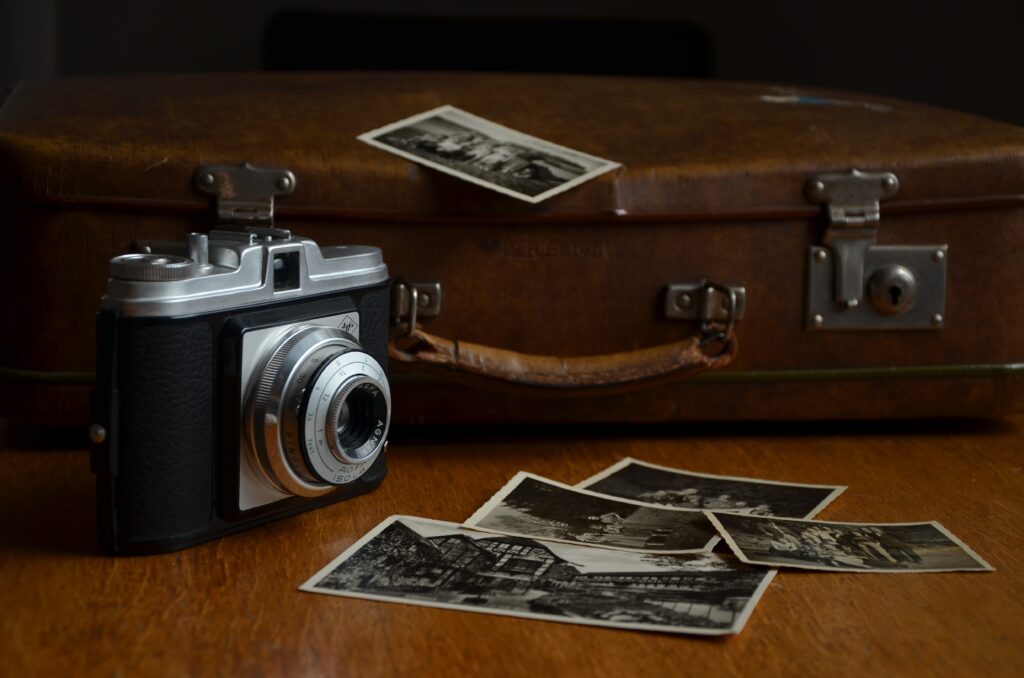
Incorporating Hobbies and Interests
One important aspect of capturing timeless senior photos is to showcase the subject’s hobbies and interests. As a photographer, it’s my job to identify what activities truly define my client’s personality and discover creative ways to incorporate them into the photos. I always ask for a list of hobbies and interests beforehand, so I can prepare suitable locations and props for the shoot. For instance, if the subject is a passionate musician, we could shoot at a local music venue or while they’re playing their instrument.
Showcasing Personality Through Props
Props are a fantastic way to bring out the subject’s personality in senior photos. By using meaningful objects, we can visually represent their passions and create unique images that tell a story. I always encourage my clients to bring a few items that are of personal importance to them – it could be anything from a favorite book to sporting equipment or their preferred mode of transportation. This also helps the subject feel more comfortable, as they’re surrounded by familiar items with a personal connection.
Optimizing the Use of Accessories
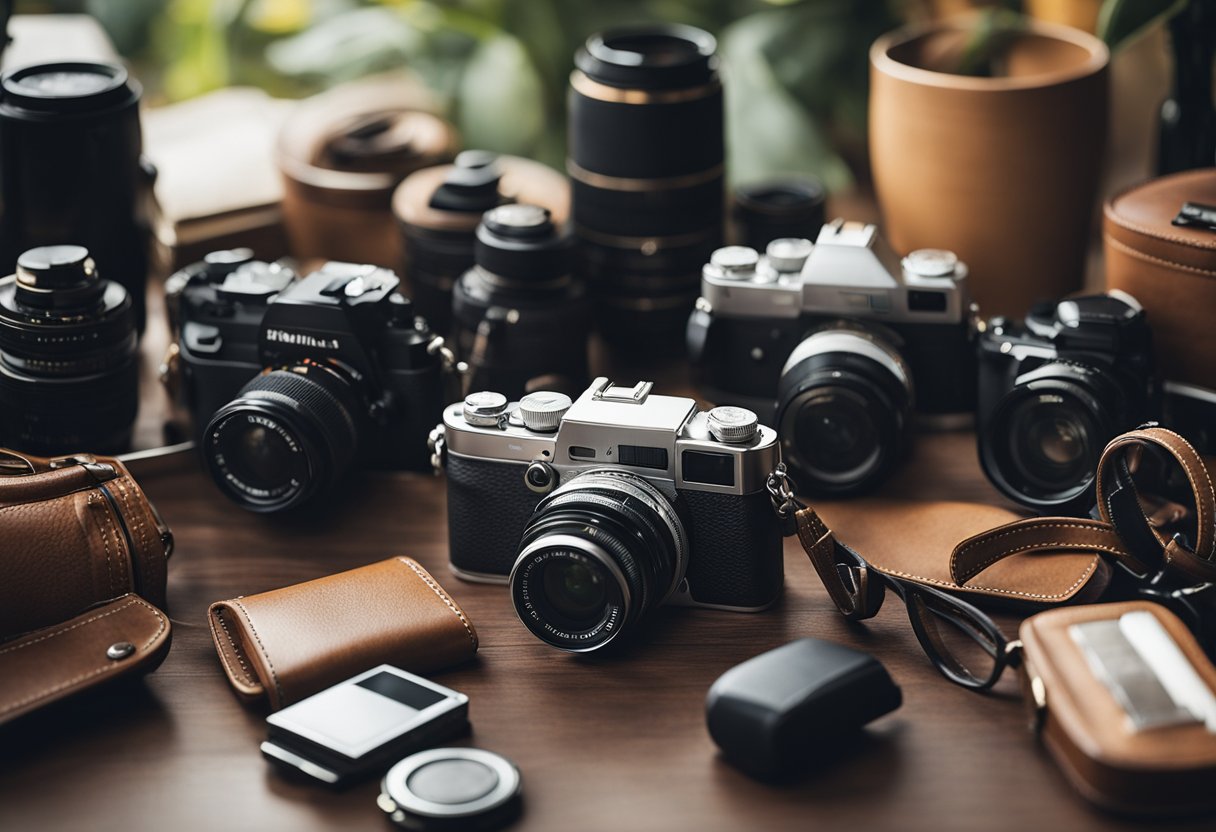
Choosing Clothing and Outfits
When I’m preparing for a photography session, I make sure to carefully select clothing and outfits that both feel comfortable and reflect my personality. I consider the season and location to ensure my outfits suit the environment. For instance, wearing layered clothing in colder months allows me to comfortably enjoy the session while still looking stylish. Solid colors and simple patterns work best to avoid distractions in the photo. Additionally, I tend to choose outfits that are timeless, so the photos don’t look dated in the future.
Using Accessories and Jewelry
Accessories and jewelry can add a touch of personal style and elegance to my photos. I make sure to select pieces that complement my outfit without overshadowing the overall look. For example, I might wear a statement necklace with a simple dress to create a balanced appearance. I also consider the size and style of the accessories, choosing pieces that are not too large or too small for my frame. Additionally, I’m mindful of the metals in my jewelry, aiming for consistency in color, such as matching gold earrings with a gold necklace. Being thoughtful in my accessory choices ensures my photos appear polished and visually appealing.
Post-Photography Work: Editing and Displaying
After capturing beautiful moments with senior portraits, it’s important to edit and display them in a way that highlights their timeless nature. In this section, I will share some editing tips and tricks, as well as ways to display photographs in an engaging manner.
Editing Tips and Tricks
When it comes to editing, I believe that less is more. It’s important to enhance the photo without over-editing, which can make it look unnatural. Here are a few tips to follow:
- Crop and straighten: Adjust the composition by cropping the image and straightening the horizon line, especially if the subject is slightly off-center.
- Correct exposure and contrast: Ensure that the photo is bright enough and has the right amount of contrast to make the subject stand out.
- Adjust colors: Enhance the colors in the image for a natural and vibrant look. Be cautious not to oversaturate or change the tone dramatically.
- Sharpen and reduce noise: Sharpening the image can bring out the details, while reducing noise helps maintain a clean and professional appearance.
A variety of photo editing tools are available, such as Adobe Lightroom and Photoshop, which offer user-friendly interfaces and powerful features.
Displaying Photographs in an Engaging Manner
Once the photos are edited, it’s time to display them in a way that reflects their beauty and captures the viewer’s attention. Here are a few ideas:
- Create a photo book: Compile your favorite images into a high-quality photo book, which can be a cherished keepsake for years to come.
- Frame and hang on the wall: Select your best shots and frame them in complementary frames. Arrange them on the wall in an aesthetically pleasing layout.
- Digital photo frame: A digital photo frame allows you to display multiple images in a slideshow format, which can be easily updated and refreshed with new memories.
In conclusion, paying attention to the post-photography work such as editing and displaying your senior portraits can make a significant difference in capturing and preserving these timeless memories. With these tips and tricks, you’ll be well on your way to honoring the beauty and essence of your loved ones’ special moments.
Exploring More Avenues
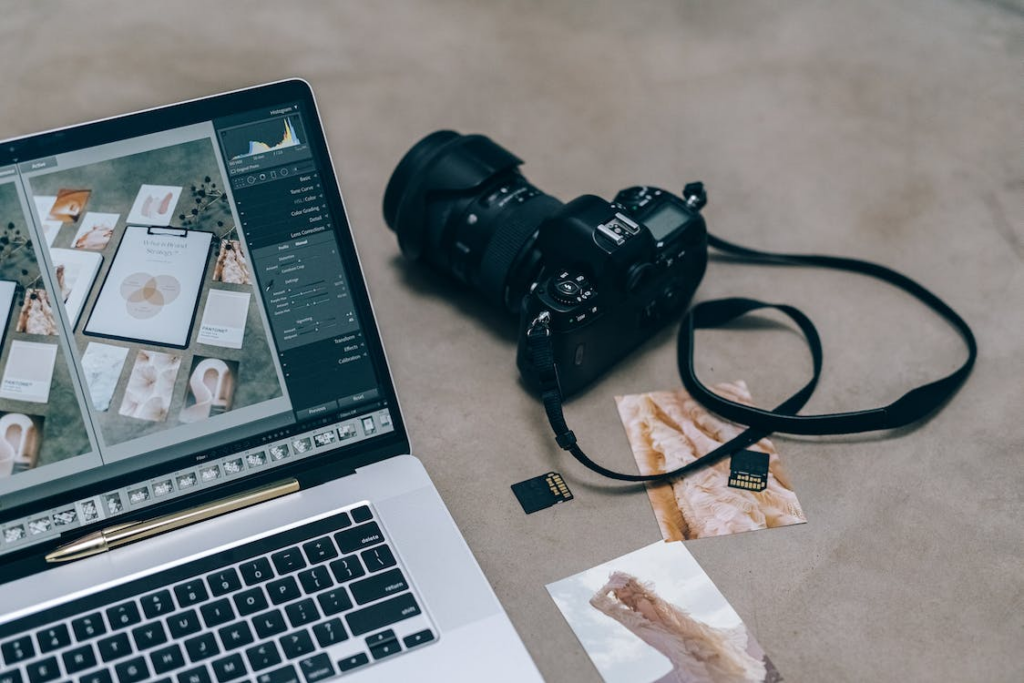
As a senior passionate about photography, I believe that it’s essential to explore various photography genres to make the most out of this fantastic hobby. In this section, I’ll discuss two such avenues: sports photography and travel photography.
Exploring Sports Photography
As a sports enthusiast, I find capturing action-packed moments in sports photography incredibly exciting. Sports photography can challenge seniors like me to experiment with high shutter speeds and continuously changing compositions. This form of photography keeps my brain sharp and ensures that I stay on my toes, quite literally!
To venture into sports photography, I usually start with local events, like my grandkids’ soccer matches or a community-run marathon. This approach helps me practice my skills in capturing fast-paced moments before diving into bigger sporting events.
One of the critical aspects I consider when shooting sports events is using a fast lens – something with an aperture of f/2.8 or even lower. This helps me focus on the subject quickly and capture the action without any blur.
Venturing into Travel Photography
As I grow older, I realize that memories are priceless, and as a senior photographer, travel photography allows me to document my experiences and immortalize those beautiful moments. Every trip I take, I make sure to pack my camera and tell my story through the lens.
In travel photography, I pay special attention to various elements like composition, lighting, and subjects that can convey the essence of my journey. I also consider exploring architectural photography and street photography, as these styles capture the soul of a place.
One tip I have found helpful is to take time to engage with locals and seek their perspectives. This approach can lead me to hidden gems and facilitate candid, heartwarming shots that showcase cultural insights.
By exploring sports and travel photography, I can enhance my photography skills while capturing a wide range of memories and experiences. This creative journey keeps me engaged, entertained, and challenged in my senior years.
Frequently Asked Questions
What are the best poses for outdoor senior portraits?
When taking outdoor senior portraits, I find it essential to capture the subject in a natural and relaxed manner. To achieve this, I suggest experimenting with different poses, such as sitting on a bench, leaning against a tree, or even walking down a path. The key is to ensure the subject feels comfortable, so their authentic smile and body language can shine through. Don’t forget to include any hobbies or interests that define the person, like bringing a musical instrument.
How to ensure high-quality lighting for timeless senior photos?
Good lighting is crucial for capturing timeless senior photos. I recommend shooting during the golden hour, either early morning or late afternoon, to take advantage of the soft, warm sunlight that enhances the subject’s features. For a well-lit portrait, always keep the subject’s face illuminated, either by natural light or using a reflector to bounce light back onto them.
What are some unique ideas for memorable senior pictures?
To create memorable senior pictures, think outside the box and incorporate elements that showcase the individual’s personality and interests. Unique ideas can include taking action shots while they’re playing sports, wearing their school’s colors or uniforms, or even using a theme that represents their future aspirations, like college majors or career choices.
Which camera settings should be used for capturing senior photos?
When capturing senior photos, I use a camera with a large aperture to create a shallow depth of field, emphasizing the subject against a blurred background. Preferably, a DSLR or mirrorless camera paired with a prime lens with an aperture of f/1.8 or lower works best. To achieve the optimal sharpness and exposure, I adjust the shutter speed and ISO accordingly, considering the available light.
How to choose the perfect location for senior photography?
The perfect location for senior photography should reflect the person’s interests, hobbies, or personality. Consider choosing places that hold special meaning to them, such as a favorite park, beach, or local hangout spot. Additionally, selecting a location with a variety of backdrops, like lush greenery or unique architecture, can enable more diverse and captivating photos.
What clothing and accessories work best for senior picture day?
For senior picture day, I suggest wearing outfits that are flattering and resonate with the individual’s style. Avoid overly busy patterns or logos, as they can be distracting. Instead, opt for solid colors that complement their complexion or simply exude confidence. Accessories can add a personal touch to the photos, but remember to keep it subtle and meaningful. Lastly, don’t forget to pay attention to grooming aspects like nails for a polished overall look.

